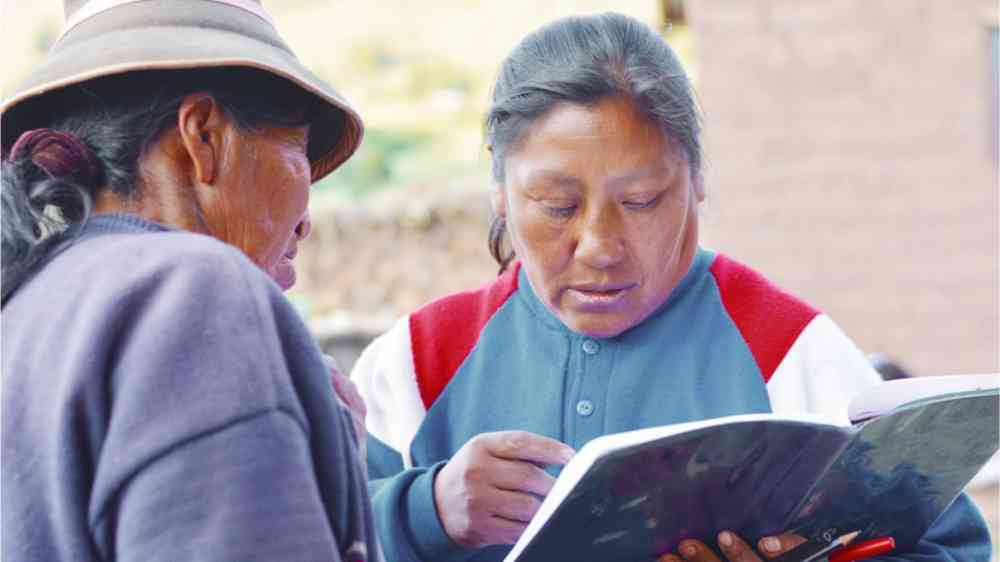How climate change is affecting women in the Amazon

According to the United Nations, climate change and its effects are not gender neutral: Women and girls are hit the hardest, as the climate crisis deepens already existing gender inequalities.
This is true especially for the developing world. According to a 2022 UN report, women have lower survival rates when faced with environmental disasters. They are also highly vulnerable to gender-based violence in the aftermath of extreme events. Agriculture, a deeply weather-dependent activity, is still the largest employer of women in low- and lower-middle-income countries. Though they are almost half of the agricultural workforce globally, women own less than 13% of agricultural lands, according to the UN.
In the Amazon, changes in hydrological cycles pose a special threat to traditional groups. Women bear a good part of the brunt, according to Luisa Viegas, an ecology researcher at the Federal University of Bahia in Brazil. “The change in river levels affects riverine communities, and when extreme events happen, women are especially affected, as they are usually home and take up most of the domestic work,” Viegas said.
Research has consistently pointed to increasing changes in rain cycles and drought in the Amazon. One study suggested that areas deforested for over a decade receive less rainfall than others during the dry season. NASA released another study in which researchers concluded that the atmosphere over the rain forest has been increasingly dry as a result of deforestation and the burning of forests. A review found that changes in land use, especially in the southern Amazon, affect atmospheric circulation: The regimes of dryness and rainfall are quickly changing.
Traditional communities that work the land, especially women who care for small family farms, are feeling those changes already. A primary impact is on food security, observed Mônica Vasconcelos, a sociobiodiversity researcher at the State University of Amazonas. In the Negro River region close to Manaus, capital of Amazonas state, rising temperatures decrease outdoor working hours. Nearer the Juruá River (in the west), flooding extremes mean reduced cassava production.
“The result of both flood and drought is increased food insecurity and less revenue for local communities. For women it is even worse, as they have a double work journey and do not receive twice the compensation,” Vasconcelos said.
In Brazil, women are a powerful workforce behind family farming—according to Brazil’s National Supply Company (CONAB), female participation was 80% higher than male participation in family farming in 2019. Family farms in the Amazon are particularly vulnerable to flooding and drought. “Soils in the Amazon are really acidic, so the overflow of rivers helps balance the soils’ pH,” said Marcela Vecchione, an Amazonian studies researcher at the Federal University of Pará. Women usually sow the floodplains after the rainy season, but the lack of [accurate precipitation forecasting] harms the management of small agricultural systems,” she said.
Such mismanagement not only confounds the agroecological calendar, but also harms the collection of seeds for future production seasons, Vecchione said.
Finding solutions
Challenged with the current scenario, women in the Amazon are working on solutions. One project addressing the issue is Amazonian Agroecological Logs (Cadernetas Agroecológicas na Amazônia), in which women keep track of the food they produce, consume, exchange, donate, and sell. Created in 2011 at the Center for Alternative Technologies of the Zona da Mata region in the eastern part of Brazil’s Minas Gerais state, the log system is familiar to rural communities in Brazil.
This year, the Federation of Organs for Social and Educational Assistance (FASE), a nongovernmental organization, together with the nonprofit Dema Fund, is undertaking the project in Pará state, in the Amazon region. According to Beatriz Luz, an educator at FASE and the Dema Fund, the organization is following about 90 women in Pará state.
“Every day, women write down all they do with their production and account for what they would pay or get, so they have an idea of their work’s worth—something that has been historically made invisible,” said Luz. In a previous round of the project, the logs revealed that women made an average of 400–600 reals ($80–$120) a month—about half of Brazil’s current minimum wage. Even that value, according to Luz, is an underestimate, “as women do not always note the seeds they exchange, for example.”
The project “sheds light on [what is] very often invisible work, fosters food security,” and contributes to local biodiversity, Luz explained. (One log documented 246 species in a single backyard garden plot.) The logs have also cataloged rural work, allowing the women to apply for retirement benefits from the government. By keeping effective records, women farmers are able to scale their production—some family farms manage their crops in a way to sell to local schools or businesses, for instance, while others diversify to extend growing seasons or include animal husbandry.
In another project, this one close to the Negro River in São Gabriel da Cachoeira, Amazonas state, members of the Indigenous Women’s Association of Alto Rio Negro are working to pass on and preserve their Traditional Knowledge of agricultural production. Older women lead workshops in which they teach younger generations to grow beans, cassava, and other crops. It has been a challenge to follow the tradition by the book as rainfall patterns change, said Elizângela Costa, a Baré Indigenous leader who directs the Women’s Association.
“We’re looking for new alternatives at the same time we want to protect our Traditional Knowledge and value our fellow women. It hasn’t been easy, but it’s important to care for our community, our territory, and our future generations,” Costa said.